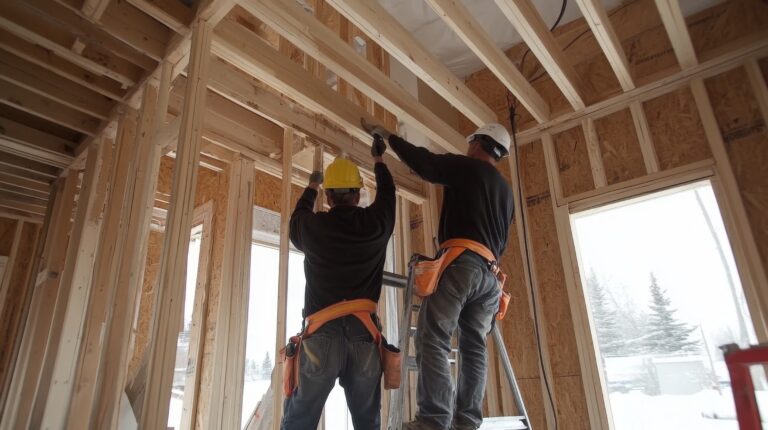Creating a comfortable and efficient tiny home involves far more than just finding the perfect layout or maximizing your storage space. One of the most important aspects of tiny home living is ensuring that your space is equipped with all the essential utilities you need for daily life. Whether you’re dreaming of an off-grid retreat or a modern, connected oasis, understanding your options for water, electricity, and waste management is key to building a home that’s as functional as it is cozy. At Tiny Homes of Tucson, we’re dedicated to helping you navigate these choices so your tiny home is ready for anything.
Water Systems
Securing a reliable water supply is one of the first steps to making your tiny home livable. Depending on your location and lifestyle preferences, you may choose to connect your home to a municipal water line, drill a well, or utilize alternative sources such as rainwater harvesting.
Municipal connections are ideal for tiny homes parked in communities or on properties with existing infrastructure. This allows for a consistent water supply and easy integration with standard plumbing fixtures. For those planning to move their tiny home or live in more rural areas, well water can provide independence from public utilities, though it does require an upfront investment in drilling and regular maintenance.
Rainwater harvesting is an increasingly popular choice among tiny homeowners who wish to reduce their environmental footprint. With the right filtration and storage system, rainwater can become a safe and sustainable source for all your needs. Effective rainwater harvesting can significantly reduce stormwater runoff and help conserve municipal water supplies.
When planning your water system, don’t forget to consider water conservation strategies. Low-flow fixtures, efficient appliances, and mindful usage can dramatically reduce your daily consumption, helping you make the most of limited storage and supply.
Electricity
Electricity is the backbone of modern living, even within the minimalist walls of a tiny home. Your energy setup will depend on whether your home is stationary or mobile, as well as your personal sustainability goals.
For many, grid-tied systems offer the simplest solution—plugging in to an existing electrical grid means reliable power for lights, appliances, and heating or cooling systems. If you’re establishing your tiny home on a permanent foundation, this is often the most convenient route.
However, the rise of solar energy has opened the door to greater independence and sustainability. Advances in photovoltaic technology have made it possible for even compact roof spaces to generate significant electricity. Integrating solar panels with battery storage allows you to capture and use energy even when the sun isn’t shining, providing both flexibility and peace of mind.
Even if you choose to remain connected to the grid, solar can act as a valuable supplement, reducing your electricity bills and your carbon footprint.
Waste Management
Managing waste responsibly is a key part of tiny home living, especially in off-grid scenarios. The right waste management system will keep your home clean, sanitary, and eco-friendly.
Traditional sewer connections are available in many tiny home communities and on properties with established infrastructure. This is the simplest option for those who plan to stay in one place and want the convenience of standard plumbing.
For greater flexibility or off-grid living, composting toilets offer an environmentally friendly solution that eliminates the need for a septic tank or sewer hookup. Modern composting toilets are odorless, easy to maintain, and can turn waste into usable compost for non-edible plants. Composting toilets can reduce household water use significantly, making them a smart choice for conservation-minded homeowners.
Greywater systems are another way to increase sustainability in your tiny home. These systems safely recycle water from sinks, showers, and washing machines for use in irrigation or toilet flushing, further reducing your environmental impact.
Seamless Integration
Integrating utilities into a tiny home requires thoughtful planning and a clear understanding of your needs. Here are a few essential tips for a smooth installation:
- Plan for Flexibility: Even if you start with traditional hookups, consider designing your utility systems to accommodate upgrades like solar panels or rainwater collection in the future.
- Prioritize Efficiency: Tiny homes naturally encourage less resource consumption, but choosing high-efficiency appliances and fixtures can amplify your savings and reduce your environmental impact.
- Work with Professionals: Utility installation—especially for water and electrical systems—should always be handled by licensed professionals.
Renewable Energy
Solar isn’t just an option for off-grid enthusiasts—it’s a practical and increasingly affordable way to supplement your tiny home’s energy needs. With Arizona’s abundant sunshine, tiny homeowners near Tucson can benefit from one of the highest solar potentials in the United States. Arizona ranks among the top states for solar energy production, making it an ideal region for harnessing the sun’s power.
By combining solar panels with energy-efficient appliances and mindful usage, it’s possible to minimize or even eliminate your electricity bills, reduce your reliance on fossil fuels, and contribute to a more sustainable future.
Ready to Build Your Perfect Tiny Home?
Outfitting your tiny home with the right utilities is a critical step in turning your dream into reality. Whether you’re looking for guidance on water and waste systems or want to explore the latest in solar technology, our experts at Tiny Homes of Tucson are here to help. We specialize in creating custom tiny homes that blend comfort, efficiency, and sustainability—so you can focus on enjoying life in your perfectly equipped tiny space.
Let us help you navigate your utility needs and build a tiny home that works seamlessly for your lifestyle. Reach out to our team today to learn more about our available models, custom options, and expert utility integration services.


